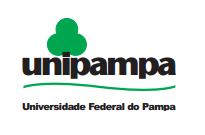Doutoranda em Marketing na Florida State University. Possui graduação em Administração pela Universidade Federal do Pampa – UNIPAMPA (2015) e mestrado em Administração – Área de Concentração: Marketing, pela Universidade Federal do Rio Grande do Sul – UFRGS (2017). Possui experiência docente (UNIPAMPA e SENAC/RS). Tópicos de pesquisa: marketing, comportamento do consumidor, marketing de serviços [Lattes].
Textos Indicados na entrevista
KNOWLEDGE
Chris Janiszewski Aparna A. Labroo Derek D. Rucker (2016), “A Tutorial in Consumer Research: Knowledge Creation and Knowledge Appreciation in Deductive-Conceptual Consumer Research,” Journal of Consumer Research, 43 (2), 200–209.
Brinberg, David and Elizabeth C Hirschman (1985), “Multiple Orientations for the Conduct of Marketing Research: An Analysis of the Academic / Practitioner Distinction,” 161–74.
WRITING
Peracchio, Laura A. and Jennifer Edson Escalas (2008), “Tell Me a Story: Crafting and Publishing Research in Consumer Psychology,” Journal of Consumer Psychology, 18(3), 197–204. [
METHODOLOGY AND DATA ANALYSIS
Zhao, Xinshu, John Lynch, and Qimei Chen (2010), “Reconsidering Baron and Kenny: Myths and Truths about Mediation Analysis,” Journal of Consumer Research, 37 (August), 197-206.
Baron, Reuben M. and David A. Kenny (1986), “The Moderator-Mediator Variable Distinction in Social Psychological Research: Conceptual, Strategic, and Statistical Considerations,” Journal of Personality and Social Psychology, 51 (December), 1173-1182.
Spiller, Stephen A., Gavan J. Fitzsimons, John G. Lynch Jr, and Gary H. McClelland (2013), “Spotlights, floodlights, and the magic number zero: Simple effects tests in moderated regression.” Journal of Marketing Research 50, 2, 277-288.
Andrea C. Morales, On Amir, Leonard Lee; Keeping It Real in Experimental Research—Understanding When, Where, and How to Enhance Realism and Measure Consumer Behavior, Journal of Consumer Research, Volume 44, Issue 2, 1 August 2017, 465–476.
Meyvis, Tom, and Stijn MJ Van Osselaer (2017), “Increasing the Power of Your Study by Increasing the Effect Size.” Journal of Consumer Research 44, 5: 1157-1173.
Pieters, Rik (2017), “Meaningful Mediation Analysis: Plausible Causal Inference and Informative Communication,” Journal of Consumer Research, 44 (3), 692–716.
Perdue, Barbara C. and John O. Summers (1986), “Checking the Success of Manipulations in Marketing Experiments,” Journal of Marketing Research, 23 (November), 317-326.
Oppenheimer, Daniel M, Tom Meyvis, and Nicolas Davidenko (2009), “Journal of Experimental Social Psychology Instructional Manipulation Checks: Detecting Satisficing to Increase Statistical Power,” Journal of Experimental Social Psychology, 45(4 April), 867–72, http://dx.doi.org/10.1016/j.jesp.2009.03.009.
Wessling, Kathryn Sharpe, Joel Huber, and Oded Netzer (2017), “MTurk Character Misrepresentation: Assessment and Solutions,” Journal of Consumer Research, 44(1), 211–30.
MTURK
Paolacci, Gabriele and Jesse Chandler (2014), “Inside the Turk: Understanding Mechanical Turk as a Participant Pool,” Current Directions in Psychological Science, 23(3), 184–88.
Wessling, Kathryn Sharpe, Joel Huber, and Oded Netzer (2017), “MTurk Character Misrepresentation: Assessment and Solutions,” Journal of Consumer Research, 44(1), 211–30.
